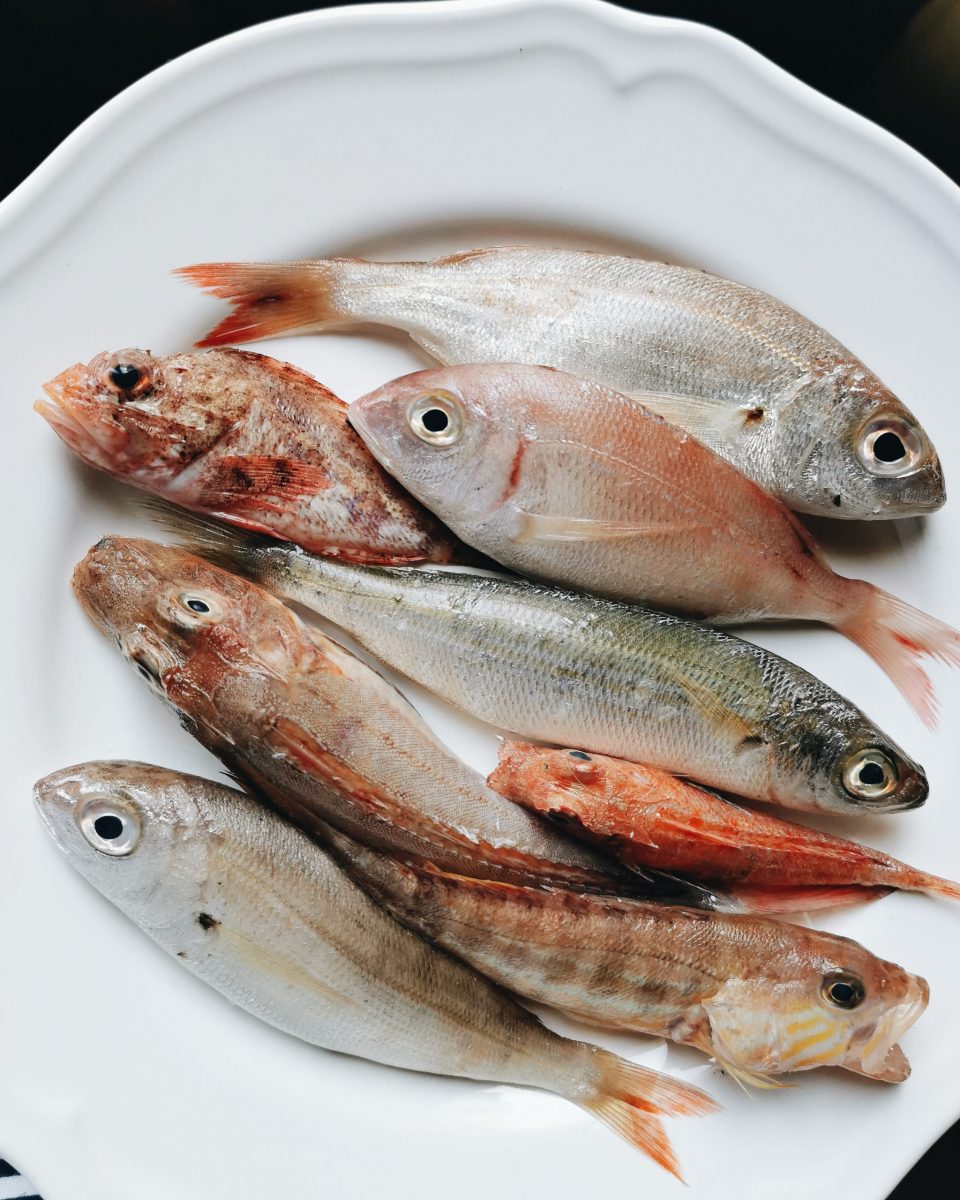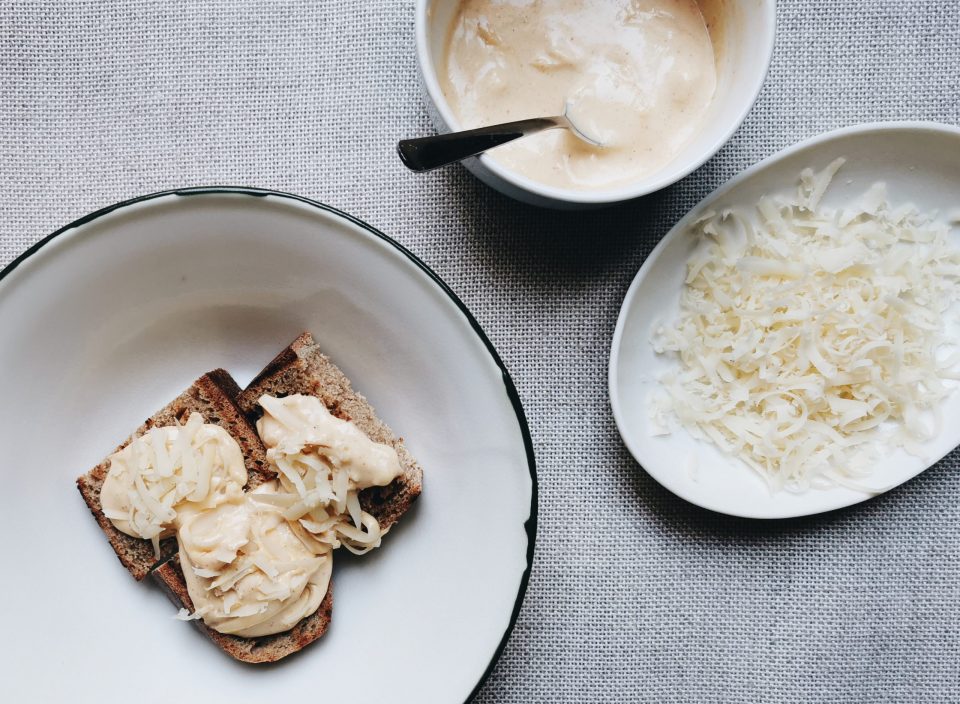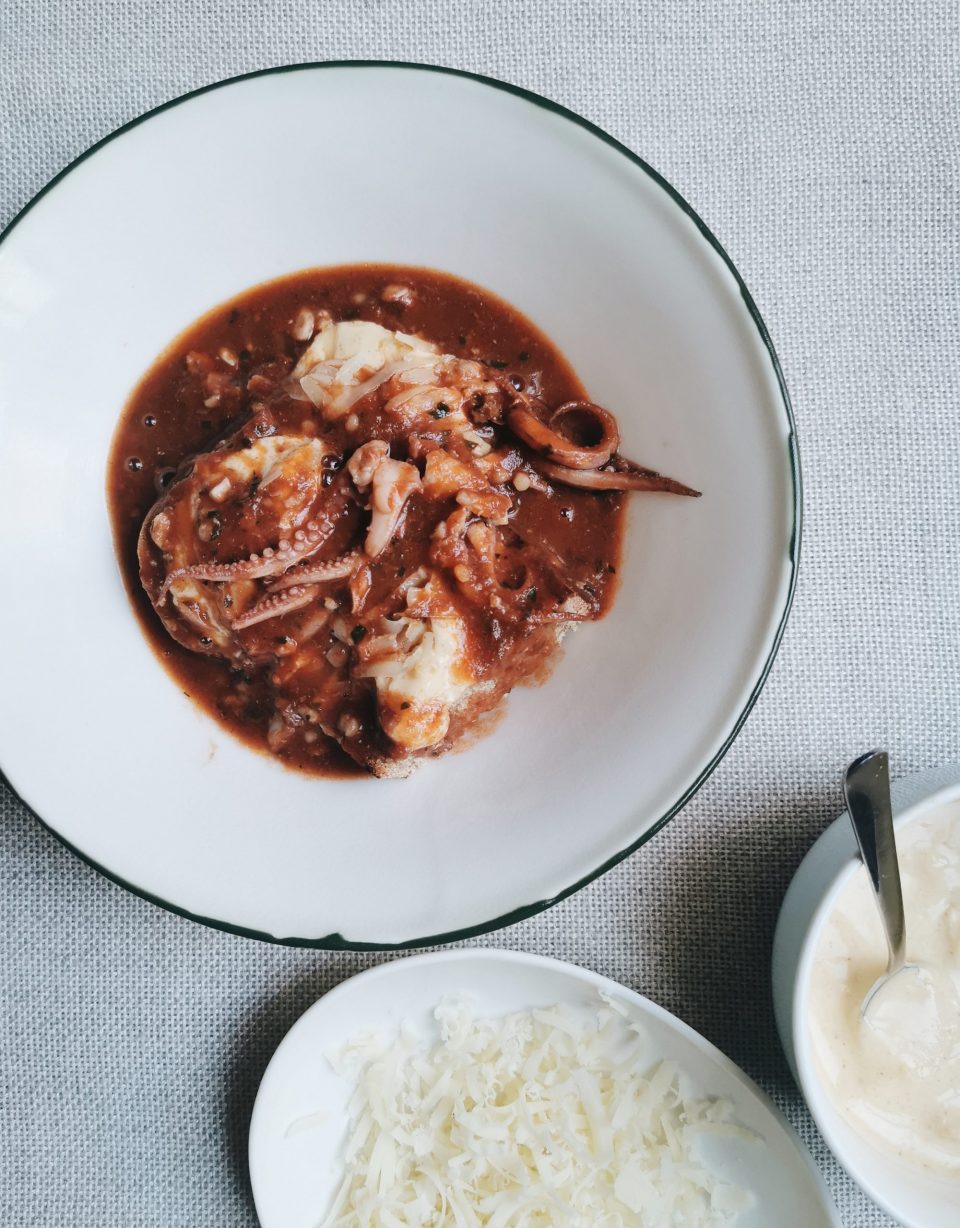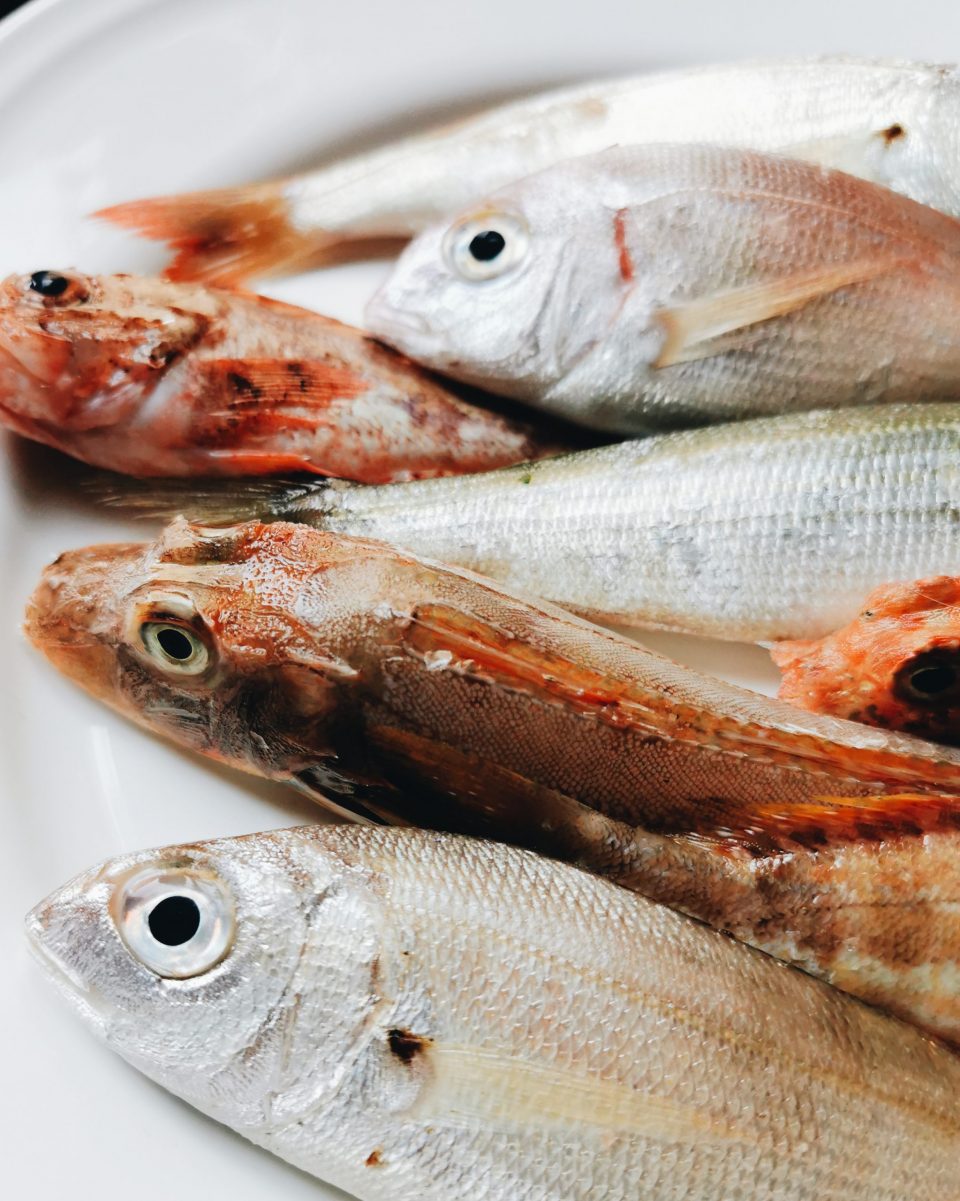
The supermarket was offering the prettiest fish plucked out if the waters of the Tuscan arcipelago last night — so fresh they smell of the sea and are still in rigor mortis — for a steal, 6 euro a kilo. Look at how bright eyed and beautiful they are! These small fish — a mixture of different types of sea bream known as fragolino (the pink one, known as pandora in English) and mormora (striped sea bass, with the yellow stripe on his cheeks), along with gallinella (gurnard), scorfano (scorpion fish) are labelled as pesce da zuppa, fish for soup, or sometimes paranza, for frying whole, because of their pint size. Often there are some triglie (red mullet) in the mix too.
Tuscany alone has 400 km of coastline and 7 islands and there are many good Tuscan fish soups (let alone the ones found all over the country!), the most famous being Cacciucco from Livorno, a huge, minimum 2 person type dish made with thirteen different types of seafood. But there’s another, very memorable one for me that I had many years ago a little south of Livorno. We were in the port city of Piombino (the mainland stop if you’re on the way to Elba Island) on a very cold blustery autumn day, at Garibaldi Innamorato — an appealing choice I had selected out of that year’s Slow Food restaurant guide. What got me was that they only use the freshest fish of the day so the menu is never the same, it’s always unexpected, except for one mainstay, the Zuppa Corsa or Corsican soup.


Before you wonder why you’d have Corsican soup in Tuscany, look up Piombino on a map and you will see about 100 km to the east, on the other side of Elba island, is the finger-point of Cap Corse, Corsica. It’s closer than Florence. You can see it on a clear day easily from here. Well, we had to have their famous Zuppa Corsa, where the thick, smooth, rust-hued fish soup is ceremoniously spooned out of a tureen over a plate of toasted crostini previously topped with grated cheese and a dollop of pink rouille sauce (it’s a bit like an aioli but spiced with chilli and often paprika, however at Garibaldi Innamorato, they make theirs — interestingly — with housemade mayonnaise and harissa). It sounds odd in the regular context of Tuscan fare — fish with cheese is just not a thing in this part of Italy, creamy mayonnaise isn’t particularly either. But oh it works!
If you are already familiar with French bouillabaisse, then it’s not too dissimilar from the famous soup of Marseilles. Yet it is also different. In bouillabaisse, similar fish is used (traditionally also eel and shell fish) but the soup base is decidedly more Provençal, which in Julia Child’s description means, garlic, onions, tomatoes, olive oil, fennel, saffron, thyme, bay, and usually a bit of dried orange peel. You may even find potatoes or sea urchin, and it is served with rouille sauce on toasted bread at the bottom of the plate. The boiled fish is eaten after the soup course. The Corsican soup base is more rustic and very similar to smooth, brothy Tuscan fish soups like minestra di pesce which you might eat with pasta in it, and this zuppa Certosina from a Tuscan monastery. Oh and then there’s the Swiss cheese. A must – you could probably use another type of cheese but make sure it is mild and melty.
Just thinking about this warming, delicious dish, at once creamy, cheesy and yet tasting of the freshest Tuscan seafood, made me dream of heading back to Piombino as soon as lockdown is over. In the meantime it also had me looking up the rouille sauce recipe right away, while Marco was already cleaning the fish.
I followed a recipe for the rouille from the Silver Spoon, the main tweak being that Marco insisted on a hint of tabasco going in there! The soup part of the recipe was all Marco. It doesn’t usually have the calamari in there but we couldn’t resist as those were on display too and very fresh. Rather than the entire soup being blended smooth, he left the fish in pieces but this is a matter of taste. One thing I will say is that if you have a mouli/passaverdura/passatutto, it is an old fashioned contraption but a great help in making fish soup with whole fish this way as it gets rid of the bones and unwanted bits while filtering through the wanted bits. If you don’t have one, you can blend with an immersion blender, but do be careful of small bones.

Zuppa Corsa inspired by Garibaldi Innamorato
Serves 4-6 (four as a main dish, 6 as an first course)
1 kg small fish for soup (sea bream, scorpion fish, gurnard, red mullet), gutted and scaled
4 small calamari, whole if very small, or cut into large pieces and cleaned (optional)
2 garlic cloves
1 small red onion, thinly sliced
Handful of chopped fresh parsley stalks
1 whole fresh chilli, chopped
4 tablespoons extra virgin olive oil
1 tablespoon of tomato paste
500 ml wine (red or white) or fish stock
500 ml tomato passata
4 large slices of sourdough or country style bread, cut into crostini sized pieces.
50 grams of Swiss cheese, grated
Rouille sauce
1 egg yolk
2 slices of soft white bread soaked in a bit of fish stock or milk
1 garlic clove
Fresh or dried chilli (or cayenne pepper)
Pinch of salt
80ml extra virgin olive oil
Any very small fish can go in whole, but you may like to skin and fillet the larger ones (keep the heads).
In a saucepan, place garlic, onion, parsley stalks and chilli, pour over 3 tablespoons of the olive oil and bring to a low heat, letting everything sizzle and soften gently for about 5-7 minutes, stirring occasionally. Add the tomato paste, turn heat up to medium and stir it across the pan, you want to toast it a bit to bring out the flavour but not let it burn, 1 minute or so. Add fish heads and whole fish, and brown them on the outside a few minutes. Then add the wine, a good pinch of salt and bring to a simmer. Let cook 10 minutes, uncovered and it should reduce slightly. Add the passata along with 500 ml of water and let simmer 30 minutes gently. Taste and adjust salt to your liking.
Pass it through a mouli or sieve. It’s meant to be smooth but we actually kept larger pieces of fish in there. If you would like to do it that way, keep the fish pieces you filleted earlier for the next step. If you would like the smooth version, add the fish fillets to the soup and continue simmering 2-3 minutes, then pass through the mouli.
If using the calamari, in a separate pan, heat a little oil and over medium-high heat roast the calamari for 1 minute then add to the soup and continue cooking 10 minutes. Add the fish pieces the last 2 minutes of cooking. Keep the soup warm, this should be served nice and hot.
While the soup is simmering, you can toast the bread for crostini and set them in a dish to place on the table, maybe wrapped inside a linen napkin to keep warm.
For the sauce, use a pestle and mortar or an immersion blender to blend all the ingredients except the oil until creamy, about 1 minute. Add the oil a little at a time, whisking or blending it in for a smooth, creamy sauce. Taste for salt or heat. (Marco likes a drop of Tabasco in this but I prefer without!)
Spoon the rouille sauce into a small bowl and set it on the table, along with the grated Swiss cheese. Place the soup in a tureen with a lid and ladle. To serve, place crostini in the bottom of the bowls, top each with rouille sauce and a sprinkle of cheese. Spoon the hot soup over the top and let it sit for a minute or so then enjoy.





Comments
What if added with kwetiaw?